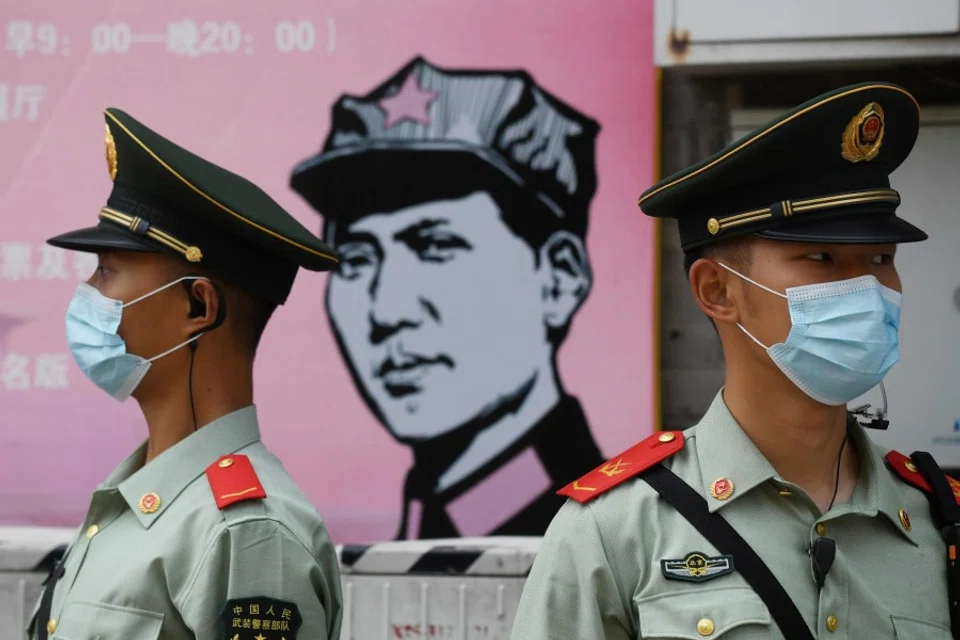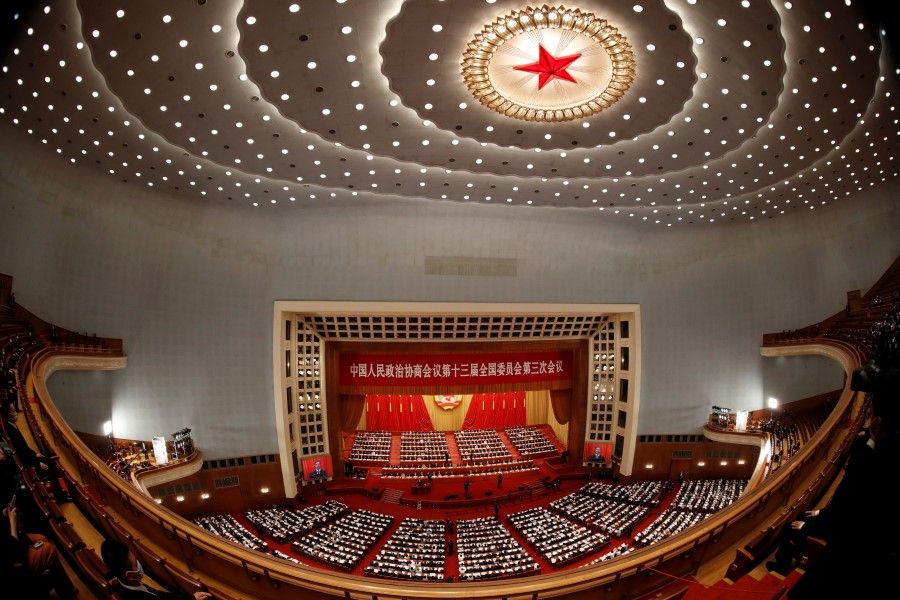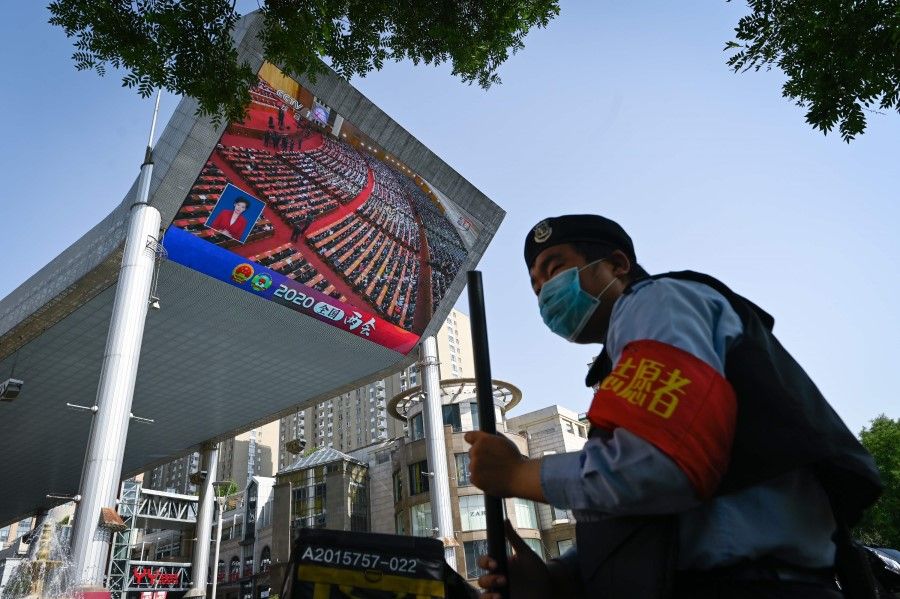Tackling ills of bureaucracy? China can pick up a few tips from Singapore

Like formalism, the problem of bureaucracy is obstinate and extremely difficult to remedy. It is a stubborn disease that generations of China's leaders have had to deal with.
As early as 1951, when the People's Republic of China was newly established, bureaucracy was already in the crosshairs as the Chinese Communist Party launched its Three Anti Campaign (an "anti-corruption", "anti-waste" and "anti-bureaucracy" campaign).
By the 1960s, Mao Zedong was convinced that a whole "class of bureaucrats" had emerged. Indeed, one of the purposes of the Great Cultural Revolution he initiated was to deal a violent blow to bureaucracy. However, not only can bureaucracy rebound easily, it may worsen over time.
After the 18th National Congress of the Communist Party of China, a new generation of leaders promptly launched a campaign against the four undesirables of bureaucracy, formalism, hedonism and extravagance.
In recent years, even amid fighting the coronavirus pandemic, Xi Jinping continues to highlight the issues of formalism and bureaucracy that require "a full examination and targeted therapy".
But why is it so difficult to fix bureaucracy? Are there different kinds of bureaucracies? What are the aptly targeted remedies that can be applied?
Hence, bureaucrats must handle administrative affairs within their fixed scope of administration (as specified by the law) according to formal rules and procedures, as well as establish and keep an archive of written documents.
Professor Martin King Whyte of Harvard University believes that there are two different kinds of bureaucracies. The first is the result of functional bureaucratisation - i.e., bureaucracy that grows out of the basic functions of a hierarchical bureaucratic system. The other is the result of structural bureaucratisation, or bureaucracy brought about by changes in the social structure. Structural bureaucratisation intensifies when the controlling power of the government expands and people's lives become increasingly controlled by a colossal, pyramidal bureaucratic organisation.
Functional bureaucratisation could lead to rigidness, imprudence and over-staffing
The hierarchical bureaucratic system is the ideal organisational form designed by Max Weber, one of the founding fathers of the traditional theory of public administration. Its purpose is to establish a tool for executing public policies, and for implementing government's regulations and directives faithfully and impartially. It should function professionally, neutrally, predictably and without favouritism. Hence, bureaucrats must handle administrative affairs within their fixed scope of administration (as specified by the law) according to formal rules and procedures, as well as establish and keep an archive of written documents.

From the viewpoint of organisational functions, the hierarchical system must maintain a strict division of labour, as well as stability and order, for the smooth functioning of the bureaucratic machine.
From the viewpoint of neutrality and professionalism, two features keep the bureaucrats' actions from being swayed by personal interests. The first is a lifelong tenure system, coupled with guaranteed entitlement to retirement pensions, such that the bureaucrats would never be arbitrarily dismissed or transferred as long as they conformed to the rules and law. The other is the fact that the salary of any bureaucrat is set to merely reflect one's post and seniority, and has nothing to do with workload or results produced.
Since better pay can only come through promotion, they would collude to expand their organisation, creating more positions to gain more opportunities for promotion.
This systemic set-up can guarantee the conformity of administration to the law, the transparency of administrative affairs, as well as the neutrality and professionalism of the bureaucrats. However, it also gives rise to functional bureaucratisation inevitably. These include the inflexible adherence to fixed stipulations and disregard for efficiency; undesirable behavioural patterns due to a lack of motivation; passing the buck; and the failure to take responsibility, among others.
More seriously, the bureaucrats would pursue interests collectively. Since better pay can only come through promotion, they would collude to expand their organisation, creating more positions to gain more opportunities for promotion. This would lead to organisational overstaffing and redundancy of personnel.
Structural bureaucratisation and unchecked power
Structural bureaucratisation, on the other hand, occurs when the constant expansion of the government's power leads to greater control over the political, economic, cultural and social life of the people. As a result, the bureaucratic system balloons; the consumption and distribution of social resources are no longer in the hands of the free market, the society, and the individual, but executed by governmental bureaucrats embedded within a pyramidal structure. Unchecked power necessarily leads to abuse. Overbearing behaviour, favouritism, and bribery get worse as the boundaries of bureaucratic control expand.
In his 1980 speech "On the Reform of the System of Party and State Leadership", Deng Xiaoping listed 24 main manifestations of bureaucracy. Nine of them were associated with functional bureaucratisation. These were ossified thinking, inflexible adherence to fixed stipulations, organisational overstaffing, redundancy of personnel, apathy in getting things done, disregard for efficiency, failure to take responsibility, endless routing of official documents from one processing point to another, and passing the buck. The other 15 were signs of structural bureaucratisation, namely, haughtiness, abuse of power, detachment from reality, detachment from the grassroots, being steeped in officialism and self-importance, habitual ostentation, a penchant for empty talk, failure to keep promises, being quick to lecture others, vengeful reprisals, suppression of democracy, keeping of secrets from (and deception against) one's higher-ups and subordinates, imperious and overbearing behaviour, favouritism/bribery, and the perversion of justice for bribes.

Functional bureaucratisation arises because the bureaucrats lack motivation, whereas structural bureaucratisation is spawned by the lack of restraints on the government's power and the widening of the bureaucratic system's control. Since the two kinds of bureaucracies differ in the cause of their malaise, the approaches for dealing with them naturally vary.
Countering bureaucracy a difficult balancing act
A response to functional bureaucratisation emerged in the 1980s in the form of the New Public Management paradigm. Part of the idea was to provide motivation through abolishing the lifelong tenure system and introducing a framework of performance evaluation. It also encouraged outsourcing public services to introduce competition and break the monopoly. This failed to show obvious results. Drawbacks included the difficulty of setting performance indicators and measuring outputs, and the fact that many public services were not suited for outsourcing. Hence, the New Public Management could not be counted as a success fit for emulation.
Presently, in parts of China, the chief officials in the higher and lower echelons of the bureaucracy would task and update each other verbally, leaving no paper trail of their communications.
The rectification of functional bureaucratisation needs to be done in moderation to ensure that the basic functions of the bureaucracy stay intact. In some countries, the abolition of the lifelong tenure system comes with the appointment of "outsiders" to senior positions. As this whittles away promotion opportunities for bureaucrats from within, superior talents are drained from governmental departments. Indeed, some scholars believe that the bungled responses of some Western developed countries to the Covid-19 pandemic could be due to the haemorrhaging of talent and a drop in the general quality of their bureaucrats.
Bureaucratic hierarchy is designed for maintaining administrative transparency and rule of law to prevent abuses of power and limit structural bureaucratisation. Impairing its functions in the name of countering bureaucracy would actually result in more bureaucracy. Presently, in parts of China, the chief officials in the higher and lower echelons of the bureaucracy would task and update each other verbally, leaving no paper trail of their communications. Such practices impair the basic functions of the bureaucratic hierarchy, allowing room for abuses of power, favouritism, and collusion.
Socialist countries suffer more severely from bureaucracy
To remedy structural bureaucratisation, one has to reduce government intervention. During the wave of privatisation in the 1980s, many countries divested public funding from public enterprises and offloaded production responsibilities to the private sector. The government lessened its involvement in or deregulated some industries.

The "network governance model", which gained prominence in the 1990s, underscores the public's right to know and to participate. It advocates the participation of stakeholders, civic organisations and citizens in governance. Such reforms expand the market and society's functions to limit the government's power, so as to rectify structural bureaucratisation. There have been significant successes in deregulation and the breaking of monopolies, but the long-term impact of privatisation has yet to be evaluated. The network governance model is still in its initial exploratory stage.
...socialist countries place more emphasis on what the government does, and thus suffer more severely from bureaucracy (especially structural bureaucratisation) as compared to capitalist countries.
The rectification of bureaucracy not only requires applying the right situational remedies to different types of bureaucracies but also focusing on the main type. Some countries are more susceptible to functional bureaucratisation, others are more vulnerable to structural bureaucratisation. In a planned economy, for example, the government sets the planned targets for production, education, employment, consumption and others. Much of people's lives comes under the control of the bureaucratic system. As foreseen by Weber, socialist countries place more emphasis on what the government does, and thus suffer more severely from bureaucracy (especially structural bureaucratisation) as compared to capitalist countries.
Mao's hard knock to bureaucratic machine did not work
According to Whyte, Mao Zedong's way of rectifying bureaucracy was mainly targeted at functional bureaucratisation. He was all for charismatic authority, against the establishment of a legal-rational bureaucratic hierarchy, and even went so far as to launch the Cultural Revolution to give the bureaucratic machine a hard knock.
At the same time, because of Mao's emphasis on class struggle and "cutting the tail of capitalism", more social activities were controlled by the state, aggravating structural bureaucratisation. Simply put, Mao combined structural bureaucratisation with functional de-bureaucratisation, while allowing the hotbed of structural bureaucratisation to flourish. Obviously, he did not hit the nail on the head.
Despite their contempt for bureaucracy, they end up contributing to structural bureaucratisation as they seek to counter bureaucracy with more bureaucracy.
Deng's way was not without problems
Deng Xiaoping recognised that structural bureaucratisation was China's main problem. In the early years of economic reform, he said the root of bureaucracy was none other than a highly centralised management system that governed China's economy, politics, culture and society, that is, a government that was managing things that it should not or could not properly manage. Deng countered bureaucracy by putting an end to the planned economy, and by expanding market distribution through supplanting the bureaucratic control.
Deng was also aware that the Chinese bureaucratic apparatus was not functioning well. It was lacking in stringent administrative regulations; a system of personal accountability; strict and clear stipulations about government agencies and the bureaucrats' responsibility and authority; not to mention a system for the proper employment, rewarding, penalisation, retirement, discharge and winnowing of the bureaucrats. Together with other leaders like Peng Zhen and Chen Yun, they set up the relevant legal system in the 1980s, hoping to bolster the functions of the bureaucratic machine.
Unfortunately, believers in governmental intervention have a strong mindset in preserving their preferences, and they often overlook the institutional costs associated with "stronger leadership" and "stringent management". Despite their contempt for bureaucracy, they end up contributing to structural bureaucratisation as they seek to counter bureaucracy with more bureaucracy.
Thirdly, the pursuit of promotion leads to favouritism/bribery, deception, ostentation and empty talks and so on.

Also, power restrictions are inevitably met with resistance from the bureaucrats. That is because one's political treatment, social status, income, assigned housing and car, as well as severance and retirement entitlements are all pegged to one's administrative grade and official position. These attached privileges induce "incentive-compatible" behaviour among the bureaucrats and this means a few things.
Firstly, the lower-ranked have to be absolutely obedient to the higher-ups since the latter determine the lower-ranked's promotion. Such total subservience inflates the egos of the superiors, breeding arrogance and an ingrained self-exaltation. Secondly, the pursuit of unofficial privileges beyond official entitlements leads to abuses of power, favouritism/bribery, perversion of justice for bribes, etc. Thirdly, the pursuit of promotion leads to favouritism/bribery, deception, ostentation and empty talks and so on.
Singapore's MPs persevered with the meet-the-people sessions because of their need to win votes in the general election, which is held once every five years.
A system predicated on empowerment by the people is key
Symptoms of bureaucracy, as aforementioned, are thought to be mindset or work style issues, for which "mass line" education has been considered the right solution. In the past, Chinese officials sent overseas had noted a practice in Singapore that was of interest. They observed that Singapore's government ministers and Members of Parliament (MPs) spend one night every week to meet electors and address their concerns in "meet-the-people sessions". Chinese officials considered it a valuable experience in forging ties with the people and adopted it as a trial run on a local scale. Unfortunately, the practice gradually stopped as leaders got busy and the system failed to take off.
Singapore's MPs persevered with the meet-the-people sessions because of their need to win votes in the general election, which is held once every five years. One has to be elected as a MP first before one can even hope to become a government minister in Singapore.
A system predicated on empowerment by the people ensures that its ministers must stay closely connected to the populace, and the bureaucrats are restrained by the ministers. Hence, it is obvious that institutional innovation should be the way to tackle the ills of bureaucracy.
